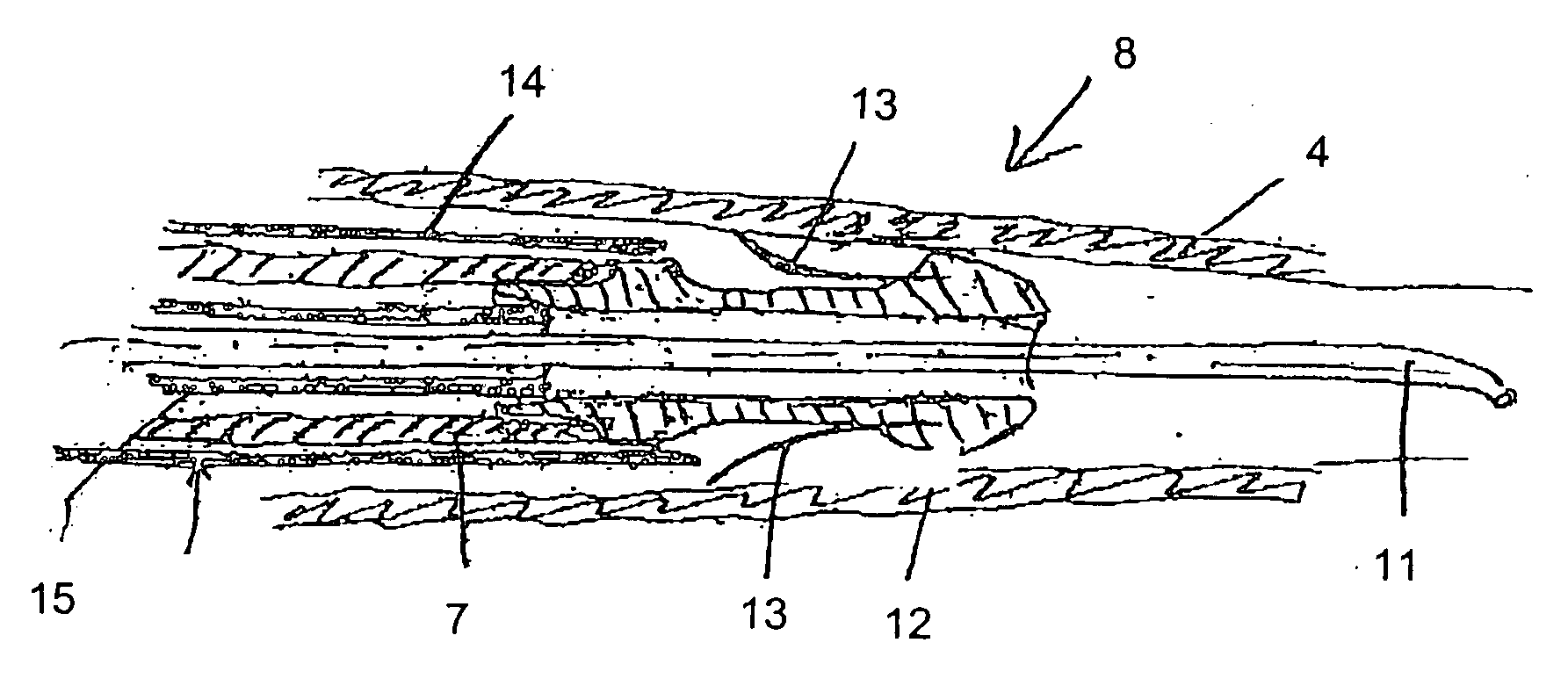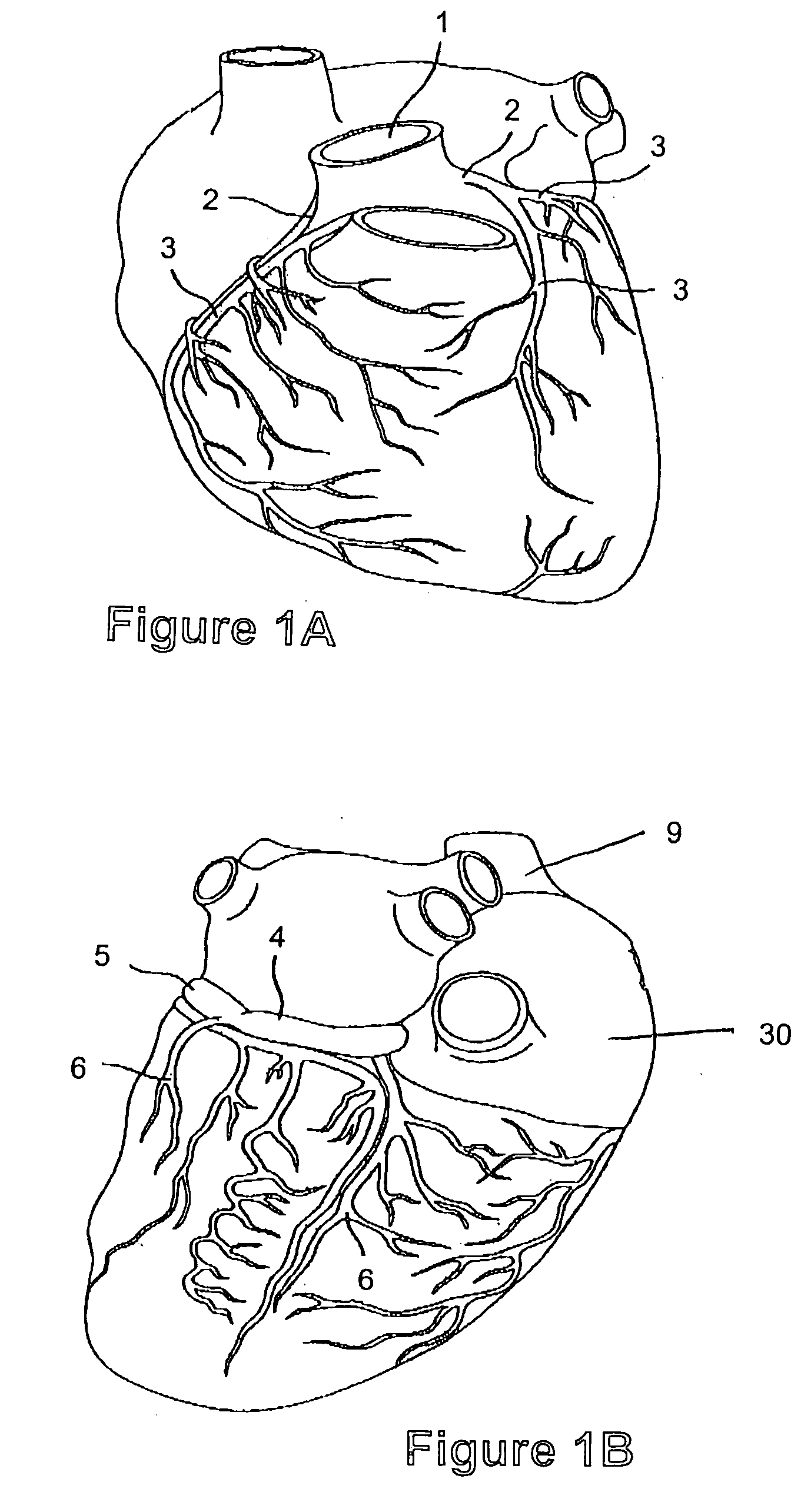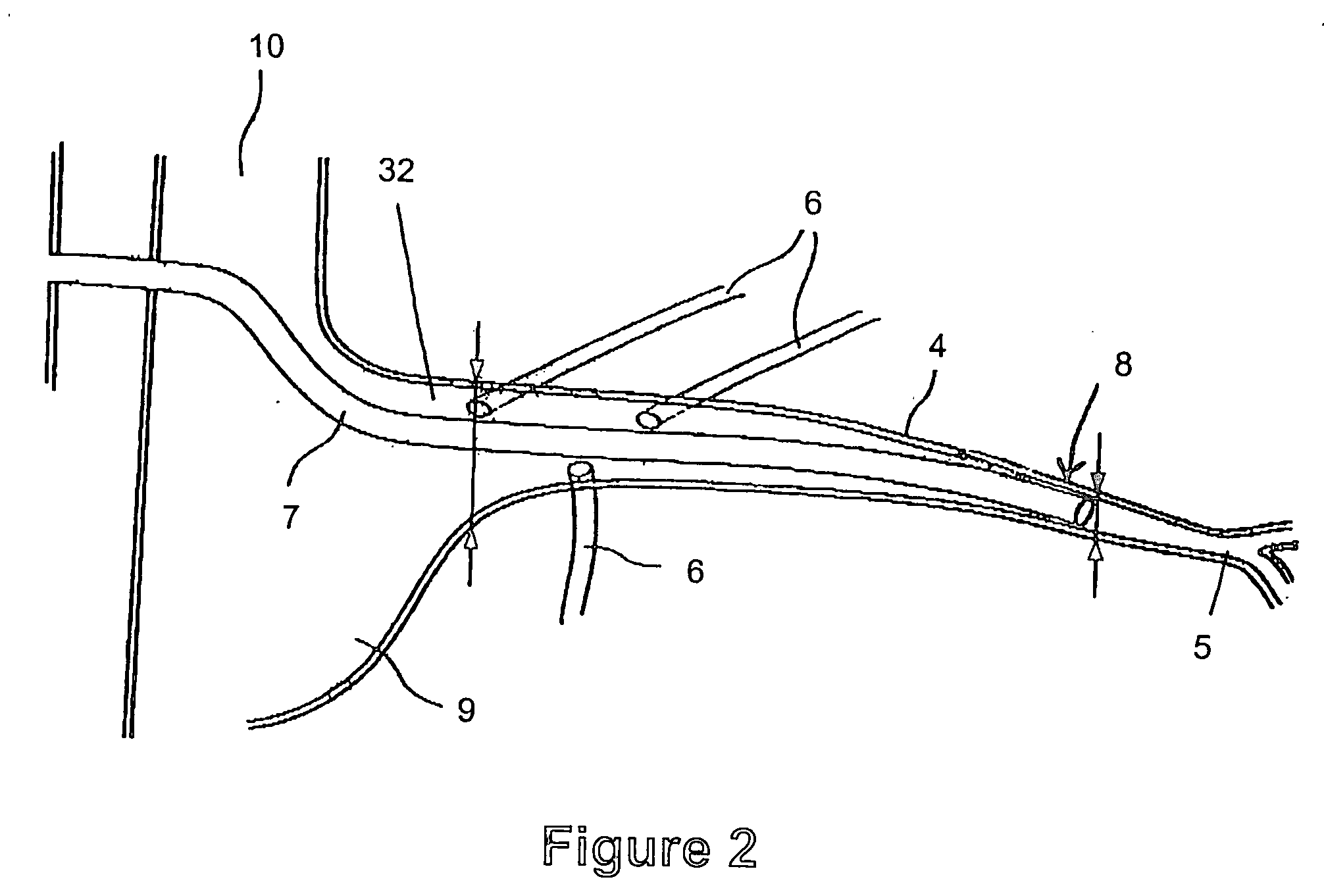Hemocirculatory catheter and method of use thereof
a technology of hemodialysis and catheters, which is applied in the field of hemodialysis catheters, can solve the problems of increasing surgical risks, inability to stop coronary artery disease, and inability to stop, and achieves the effects of reducing or eliminating strong pulling forces, reducing or eliminating pulling forces, and avoiding vascular damag
- Summary
- Abstract
- Description
- Claims
- Application Information
AI Technical Summary
Benefits of technology
Problems solved by technology
Method used
Image
Examples
Embodiment Construction
[0033] For patients who can no longer be treated with conventional surgery techniques or for whom the risk involved in bypass surgery is extremely high, the invention in one embodiment includes a procedure of continuous retrograde coronary perfusion. In continuous retrograde coronary perfusion, excluding the use of a heart-lung machine, a small incision is made on the right side of the neck through which a catheter system is inserted in the cervical vein and advanced into the right atrium of the heart. The catheter system carries a conduit (plastic or autologous material) that is anchored in the coronary sinus by means of a special anchoring system. Following secure anchoring, the free end of the conduit is drawn back through the right atrium. Following this, the free led out end of the conduit is connected with the cervical artery that lies directly next to the cervical vein. Thereby blood flow is established from a central artery to the coronary sinus.
[0034] The present inventive...
PUM
 Login to View More
Login to View More Abstract
Description
Claims
Application Information
 Login to View More
Login to View More - R&D
- Intellectual Property
- Life Sciences
- Materials
- Tech Scout
- Unparalleled Data Quality
- Higher Quality Content
- 60% Fewer Hallucinations
Browse by: Latest US Patents, China's latest patents, Technical Efficacy Thesaurus, Application Domain, Technology Topic, Popular Technical Reports.
© 2025 PatSnap. All rights reserved.Legal|Privacy policy|Modern Slavery Act Transparency Statement|Sitemap|About US| Contact US: help@patsnap.com



